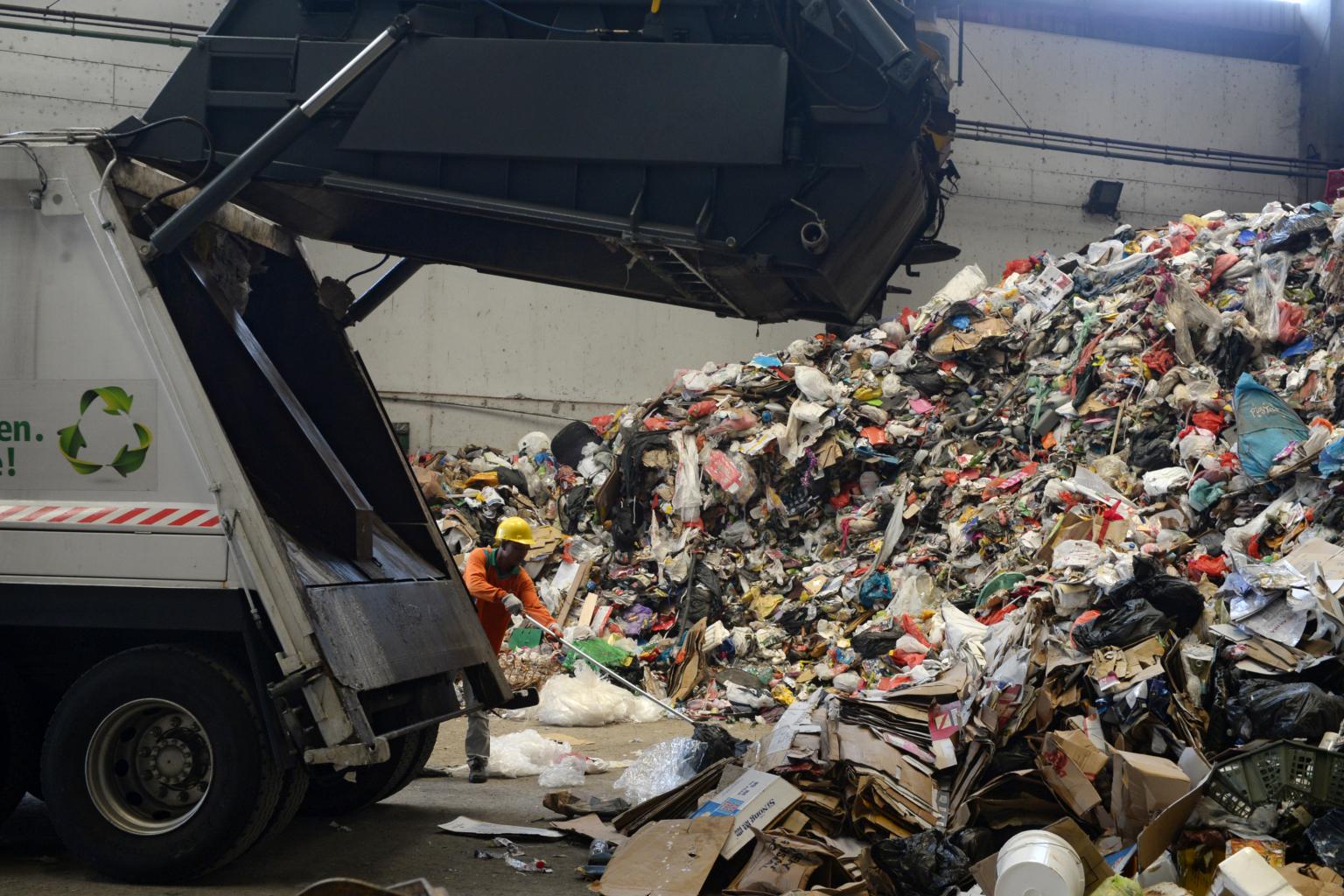Singapore researchers find ways to turn trash into building blocks
Sign up now: Get ST's newsletters delivered to your inbox

A rubbish truck dumps unsorted waste at a material recovery facility, on March 21, 2016.
PHOTO: ST FILE
Vanessa Liu
Follow topic:
SINGAPORE - Come 2035, Singapore's one and only landfill, on Semakau Island, is expected to run out of space and the nation's trash might have nowhere to go.
In a race against time to solve this impending crisis, local scientists are trying to come up with alternative uses for the country's burnt rubbish in construction and automobiles.
The idea of using incinerated ash to replace sand and stone in construction is not new, but its application has been delayed because of the risk of toxic heavy metals in the ash leaching into the environment.
Now, a research team from Republic Polytechnic (RP) has successfully created a chemical called GGBS-OPC liquid binders that can bind heavy toxic metals, like lead and arsenic, to incinerated bottom ash (IBA) so that they will not pollute the surroundings upon exposure to water, sunlight and open air. IBA is the thicker and heavier component of incinerated ash.
The polytechnic's project, which was awarded funding of $1.2 million in April, was one of four that received grants under the Closing the Waste Loop research and development initiative of the National Environment Agency (NEA).
The $45 million fund was set up in 2017 to provide support to academic institutions, research institutes and companies developing the technology needed to convert waste to resources.
The same team had in 2014 developed a special chemical to encapsulate toxic heavy metals within incinerated fly ash - the lighter component of incinerated ash - so as to prevent leaching.
Principal investigator of the project, Dr Goh Chee Keong, said a tonne of the IBA can produce between 0.9 and 0.95 tonne of material to be used for construction.
Approximately 1,500 tonnes of incinerated bottom ash - around five times the amount of incinerated fly ash - are produced in Singapore daily, according to figures by the National Environment Agency in 2018.
RP has filed for a patent for its research that is pending approval and is currently collaborating with construction firm EnGro Corporation, which provides the raw materials for making the chemical.
"The challenge of using the incineration ash in construction materials is that currently Singapore does not have its own standards or environmental guidelines for industry and thus the adoption is quite limited," said Dr Goh.
He added that NEA is currently working to develop environmental guidelines for using IBA in construction materials and RP expects to expand the project to an industrial scale in three or four years.
Under the same grant call, a research project by the Nanyang Technology University (NTU) to use incinerated ash to construct catalytic converters in automobiles has also received the nod of approval from NEA.
Catalytic converters are used to transform toxic gases produced during fuel combustion in car engines into non-toxic gases for release into the environment. For instance, gases such as carbon monoxide will turn into carbon dioxide when it goes through the converter.
Noble metals such as platinum and palladium are used as the catalysts.
The team at NTU has found a way to construct catalytically active ceramic substrates using incinerated ash to act as filters in the catalytic converters, potentially reducing the amount of noble metals needed.
Associate Professor Xu Zhichuan, who is lead principal investigator (PI) in the project, said that approximately 2 kg of incinerated ash would be needed to build a ceramic substrate for a car's catalytic converter.
The team of four received a grant of $1.5 million last month and is currently studying ways to build the substrate.
"Such an application can lead to high value creation while consuming considerable amount of ash to relieve the pressure on the landfill site," said Professor Hu Xiao, the co-PI for the team.
"It provides a waste management solution for land-scarce countries such as Singapore."

